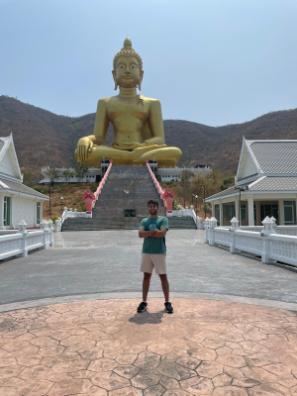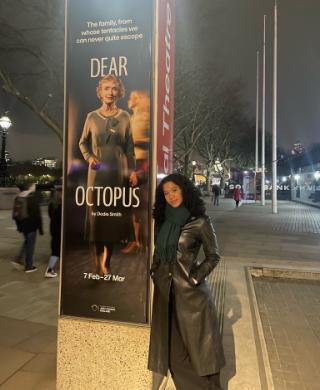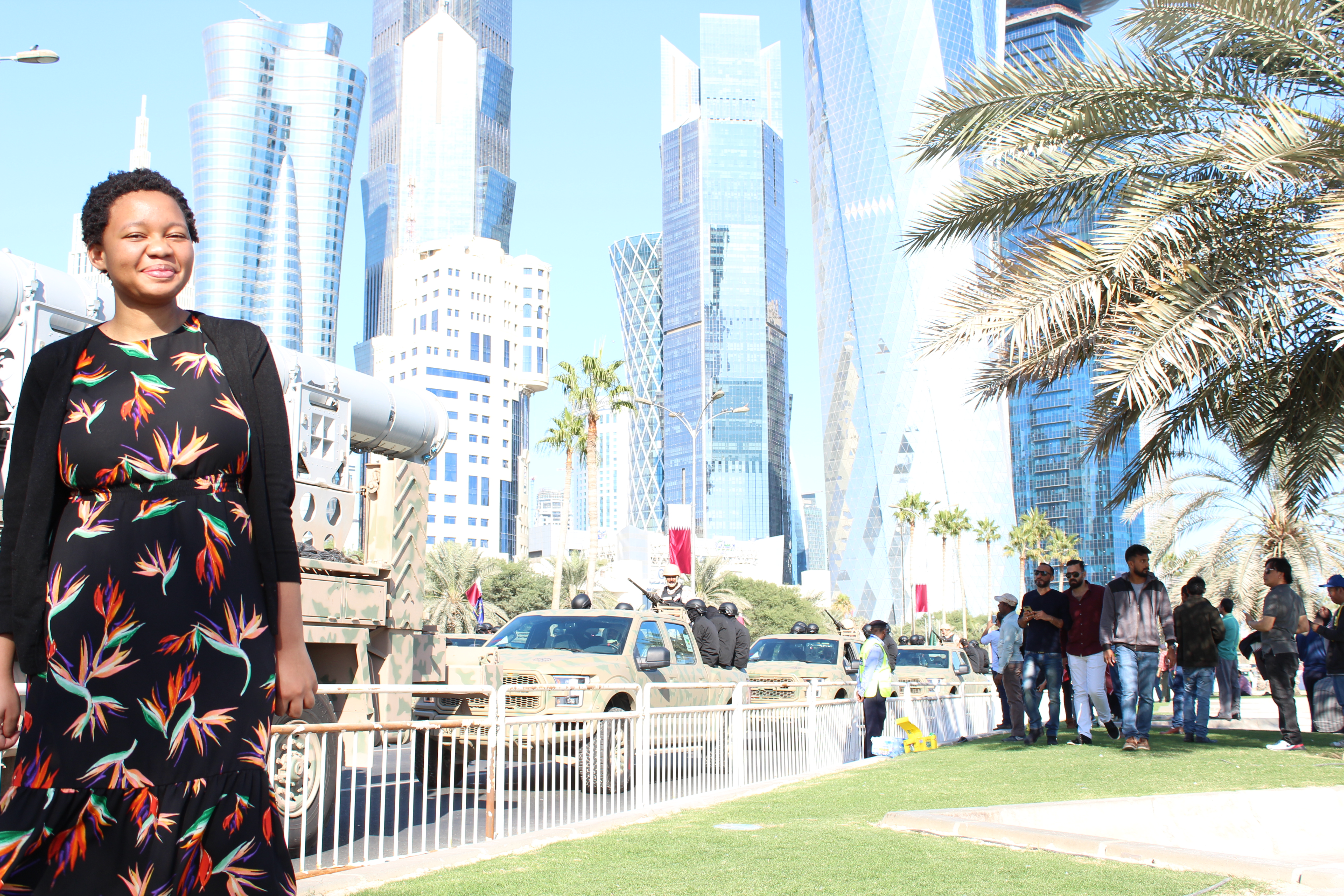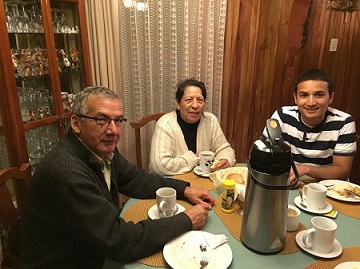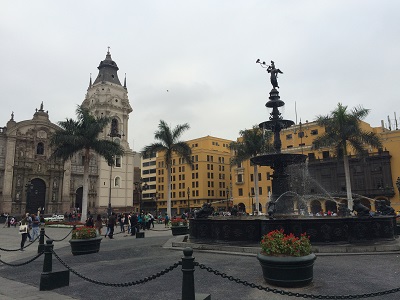Glavin Global Fellows Projects
The Hindu and Buddhist Influence in Thailand
Through the generous GGF grant, I was able to explore and research the Hindu/Buddhist Influence within Thailand. As a practicing Hindu myself, I was always interested in spirituality, meditation, and religion. Through my trip, I was able to: take a Sudarshan Kriya Yoga (SKY) course, explore various Buddhist temples around Thailand, and even got the opportunity to talk with a monk! The country itself reflects the homogenization of both Buddhism and Hinduism through its architecture, culture, and overall way of life. It was an extremely enriching and introspective journey for me from start to finish. The knowledge and wisdom I gained on this trip was the biggest step I’ve taken in both my religious and spiritual journey and I am endlessly grateful for the Glavin Global Fellows for helping facilitate this opportunity. Watch my video here. -Chiraag Kankariya (Grant 2024)
London's Performing Art Scene
The Glavin Global Fellows Grant provided me with the exciting opportunity to assess, explore, and experience London theater for the first time. Growing up in New York City, I was frequently exposed to the performing arts scene in the Northeast but lacked global perspective of theater. In London, I was able to tour the Royal Opera House, sit in on a rehearsal for Madame Butterfly, explore the National Theatre, and much more. It was a lovely way to truly assess the differences between London’s performing arts versus New York’s. I learned about the history of theater, understand the nuances between traditional stage lighting and the newly implemented LED lighting, and witness first-hand the innovative nature of West-End productions. Thanks to the GGF grant, I gained insight into London theater by engaging with creative artists and attending multiple shows. -Madison Roberts (Grant 2024)
Muslims in Japan, a Cultural Shift
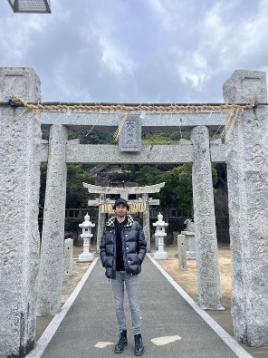 I traveled and lived in Japan for 30 days, inspired by the influx of Pakistani Muslim migrants to Japan to study the life of a Muslim living in Japan to research how Japan's traditional and deep culture is embracing the demographic and political shifts of southern Japan. After living in Japan, seeing Muslim cultural sights, going to famous Halal Restaurants, visiting the Mosques, and of course going to the iconic convince stores, I was pleased to find Japan's cultural not only embracing the Muslim culture, but in fact mixing with it, to create something new and beautiful, just like the Tatami Muslim Prayer Rugs adorning Mosques all around the country. My Video - Muslim In Japan -Tahnoon Murtza (Grant 2023)
I traveled and lived in Japan for 30 days, inspired by the influx of Pakistani Muslim migrants to Japan to study the life of a Muslim living in Japan to research how Japan's traditional and deep culture is embracing the demographic and political shifts of southern Japan. After living in Japan, seeing Muslim cultural sights, going to famous Halal Restaurants, visiting the Mosques, and of course going to the iconic convince stores, I was pleased to find Japan's cultural not only embracing the Muslim culture, but in fact mixing with it, to create something new and beautiful, just like the Tatami Muslim Prayer Rugs adorning Mosques all around the country. My Video - Muslim In Japan -Tahnoon Murtza (Grant 2023)
Exploring as a Local: Singapore
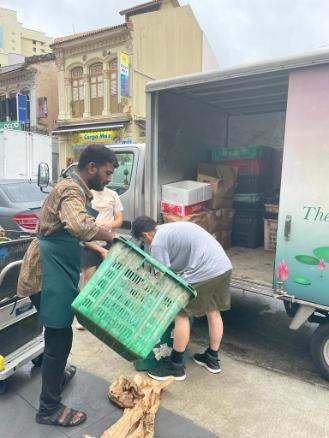
In the winter of 2023, I volunteered in Singapore at Krsna's Free Meals. The organization is a soup kitchen in Singapore run by like-minded volunteers from all over the world. I engaged with volunteers, migrant workers, and clients from the organization who provided resources or purchased food from the soup kitchen. I soon learned that everyone in the soup kitchen was kindhearted and treated each other as family. Everyone wanted to get to know me, take me around Singapore, and teach me more about their culture. During my time with Krsnas Free Meals I did multiple tasks such as cutting vegetables, loading and unloading trucks, packing and distributing food, and breaking boxes. After my volunteering sessions I had the opportunity to visit different places such as Pulau Ubin, Singapore’s Night Safari, the New Years Eve fireworks at Marina Bay Sands, and even see the Gardens by the Bay lightshow. I learned so much, gave back to the community through volunteering, and made many new friends and connections along the way. Here is my video. -Daniel Mendoza (Grant 2023)
Inner Peace of the Source
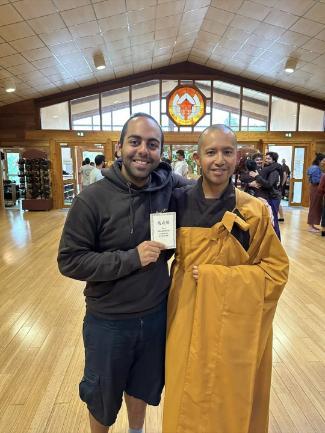
In the summer of 2023, I was fortunate to get a chance to participate in a Buddhist retreat in southern France at Plum Village. The Wake-Up retreat was home to hundreds of young individuals coming from all around the world to practice engaged Buddhism inspired by the Zen master Thích Nhất Hạnh. I lived in a Buddhist community and served the community by farming and participated in Dharma talks by Monks every day. Every day I became a step closer to acquiring the art of living mindfully through early morning meditations, walking meditations, and deep conversations we had in my BIPOC (Black, Indigenous, and people of color) family sharing. At the end of the retreat, I pledged to the Five mindfulness teachings of Buddha and got a family name, "Inner Peace of the Source," which was given to me by the monks. That experience changed the way I live and interact with others and made me a more compassionate and peaceful person. -Matin Yazdi (Grant 2023)
University Scholars Leadership Symposium
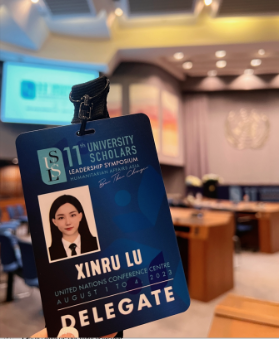 The GGF Grant supported me to attend the 11th University Scholars Leadership Symposium (USLS) held at the United Nations Conference Centre in Bangkok, Thailand. Alongside 1,200 emerging global leaders from over 100 United Nations Member States, I engaged with leaders worldwide, fostering an understanding of their diverse stories. On Kindness Day, which was the second last day of the symposium, I participated in a tree planting volunteer team. With 104 team members, we successfully planted 1,200 trees within just an hour. This experience reinforced my commitment to global leadership and further shaped my perspective on sustainable action and collaboration. -Xinru Lu (Grant 2023)
The GGF Grant supported me to attend the 11th University Scholars Leadership Symposium (USLS) held at the United Nations Conference Centre in Bangkok, Thailand. Alongside 1,200 emerging global leaders from over 100 United Nations Member States, I engaged with leaders worldwide, fostering an understanding of their diverse stories. On Kindness Day, which was the second last day of the symposium, I participated in a tree planting volunteer team. With 104 team members, we successfully planted 1,200 trees within just an hour. This experience reinforced my commitment to global leadership and further shaped my perspective on sustainable action and collaboration. -Xinru Lu (Grant 2023)
Migrant Workers of Singapore
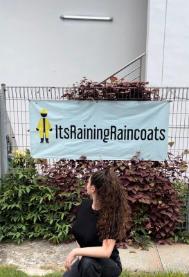
I have been interested to explore the varying conditions & treatment of migrant workers on a global scale after an Elective Abroad I took at Babson. My suitemate from Singapore inspired me to learn more about the migrant labor movement there. Specifically, the advocacy for migrant workers to integrate with the residents of Singapore. I volunteered at an organization, ItsRainingRaincoats (IRR), that aims to build bridges of integration between migrant workers and residents. This gap reached global attention during the peak of the COVID pandemic, when the government's COVID case reporting distinguished "Singaporeans" & "Migrant Workers". During my time with IRR, I worked for their new inspIRRe store. This store is Singapore’s first free shop for migrant workers, with new and preloved items available on an appointment basis. While at inspIRRe, I created content to foster an increase of community contributions to the shop as well as made instructive content for workers on the protocols of the shop. Additionally, I was able to sit down and speak with the founder of the organization, Dipa Swaminathan, to learn more about the migrant workers of Singapore and what her organization is doing to bring light to this community. Throughout my time in Singapore, I connected with various locals on this matter.” -Logan Q Harris (Grant 2023)
The Greenest City in the World: How Culture, Architecture and Technology transformed Singapore
-285x213.jpg) We visited Singapore during spring break with the objective of learning how Singapore has transformed its city from the slums in the 1960s into one of the most developed countries in the world. More specifically, we researched how its disciplined culture, green architecture, and innovative technology allowed this metamorphosis to happen. During our trip, we got to know Singapore’s history and culture by visiting the National Museum of Singapore, the Indian Heritage Centre, and exploring neighborhoods such as Chinatown, Little India and Clarke Quay. We toured some of the Buddhist and Hindu temples, tried the delicious Satay, and even met up with a Singaporean friend that had been on exchange at Babson back in 2019! To learn more about Singapore’s sustainable practices and green development, we visited the Sustainable Singapore Gallery at Marina Barrage and learned about the country’s Waste-to-Energy Plants; The Gardens by the Bay, where we observed hundreds of plant species; and the famous “green” hotel Parkroyal Collection Pickering, where we took high-rise “garden walk” on the 5th floor of the building. To top it off, we even took a night safari at the Singapore Zoo to learn about animal protection efforts and had the opportunity to feed a rhino! We had an amazing experience exploring Singapore’s fascinating cultural heritage and learning about how they are leveraging technology for good. -Nicole Edwards & Emilio Saenz (Grant 2023)
We visited Singapore during spring break with the objective of learning how Singapore has transformed its city from the slums in the 1960s into one of the most developed countries in the world. More specifically, we researched how its disciplined culture, green architecture, and innovative technology allowed this metamorphosis to happen. During our trip, we got to know Singapore’s history and culture by visiting the National Museum of Singapore, the Indian Heritage Centre, and exploring neighborhoods such as Chinatown, Little India and Clarke Quay. We toured some of the Buddhist and Hindu temples, tried the delicious Satay, and even met up with a Singaporean friend that had been on exchange at Babson back in 2019! To learn more about Singapore’s sustainable practices and green development, we visited the Sustainable Singapore Gallery at Marina Barrage and learned about the country’s Waste-to-Energy Plants; The Gardens by the Bay, where we observed hundreds of plant species; and the famous “green” hotel Parkroyal Collection Pickering, where we took high-rise “garden walk” on the 5th floor of the building. To top it off, we even took a night safari at the Singapore Zoo to learn about animal protection efforts and had the opportunity to feed a rhino! We had an amazing experience exploring Singapore’s fascinating cultural heritage and learning about how they are leveraging technology for good. -Nicole Edwards & Emilio Saenz (Grant 2023)
Cartagena: Gentrification or Development
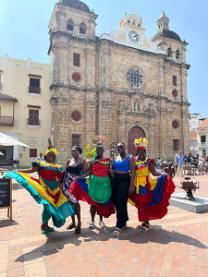 As Glavin Global Fellow Grantees we had the incredible opportunity to explore Cartagena, Colombia, a city with the second-highest Afro-Latino population in Latin America, representing over 70% of its population. As black women, we were particularly interested in exploring the socioeconomic dynamics of this diversity and how Cartagena’s development has affected all stakeholders. This led us to ask the crucial question: Is the city’s fast rising popularity rooted in development or gentrification? We conducted interviews with professionals working in NGOs that focus on development and population displacement, as well as with locals to gain their on-ground perspectives. Through our research, we discovered that while gentrification exists in Cartagena, for the past 60 years tourism has been a significant contributor to the region’s economy. Some neighborhoods were transformed and adapted for touristic purposes through significant investments which did cause displacements. Those impacted by gentrification where the middle and lower classes. However, the rise of tourism has also created different opportunities, somewhat offsetting the damages caused by gentrification. -Ariane Raymond & Abimbola Akala (Grant 2023)
As Glavin Global Fellow Grantees we had the incredible opportunity to explore Cartagena, Colombia, a city with the second-highest Afro-Latino population in Latin America, representing over 70% of its population. As black women, we were particularly interested in exploring the socioeconomic dynamics of this diversity and how Cartagena’s development has affected all stakeholders. This led us to ask the crucial question: Is the city’s fast rising popularity rooted in development or gentrification? We conducted interviews with professionals working in NGOs that focus on development and population displacement, as well as with locals to gain their on-ground perspectives. Through our research, we discovered that while gentrification exists in Cartagena, for the past 60 years tourism has been a significant contributor to the region’s economy. Some neighborhoods were transformed and adapted for touristic purposes through significant investments which did cause displacements. Those impacted by gentrification where the middle and lower classes. However, the rise of tourism has also created different opportunities, somewhat offsetting the damages caused by gentrification. -Ariane Raymond & Abimbola Akala (Grant 2023)
The Life of Native Indigenous in the Amazon Jungle
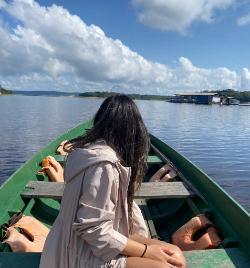 The Amazon Jungle Project was inspired by a Babson class in which we investigated the history of our countries and ancestors. The project's main goal was to explore the Amazon Forest and how Brazil's indigenous populations live, their traditions, and their culture. Through the Glavin Global Fellows grant, I was able to visit the city of Manaus, the Amazon Jungle, and understand more about the culture of Indigenous population tribes. It was great to speak to indigenous about their lives and routines in the jungle. Particularly the indigenous from the Catalão community. Their knowledge about the forest and the species that live there is extensive. They have a floating community with churches, houses, bars, and schools. All floating! It was great to visit the indigenous at the Amazon Forest. Their connection to nature and the forest is unique, and I feel very fortunate to have learned more about it. - Sthefany Dutra (Grant in 2023)
The Amazon Jungle Project was inspired by a Babson class in which we investigated the history of our countries and ancestors. The project's main goal was to explore the Amazon Forest and how Brazil's indigenous populations live, their traditions, and their culture. Through the Glavin Global Fellows grant, I was able to visit the city of Manaus, the Amazon Jungle, and understand more about the culture of Indigenous population tribes. It was great to speak to indigenous about their lives and routines in the jungle. Particularly the indigenous from the Catalão community. Their knowledge about the forest and the species that live there is extensive. They have a floating community with churches, houses, bars, and schools. All floating! It was great to visit the indigenous at the Amazon Forest. Their connection to nature and the forest is unique, and I feel very fortunate to have learned more about it. - Sthefany Dutra (Grant in 2023)
Foundations for Farming in Rwanda
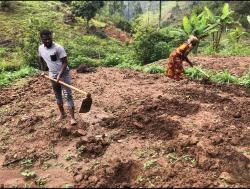 The Glavin Global Fellows grant supported my project to implement a climate smart farming project in my community, in Rwanda. My goal was to introduce new farming “Foundations for Farming” (FFF) practices that will help local farmers cope with adverse weather fluctuations. FFF encourages farmers to minimally till land and use mulch and compost. This project involved challenging my community’s culture and introducing new and unfamiliar aspects of farming. While implementing FFF project, I was able to apply communication skills, project management skills, and handling people. I was worried that people would think that I was disrupting culture because of my western education. The success of FFF project will transform agriculture sector in my community and serve as a model to implementing more climate-smart farming projects in other places. This FFF project is also a result of globalization and learning from other countries as it is currently being used in Zimbabwe to improve country’s farming. – Emmanuel Nsanganwa (Grant in 2023)
The Glavin Global Fellows grant supported my project to implement a climate smart farming project in my community, in Rwanda. My goal was to introduce new farming “Foundations for Farming” (FFF) practices that will help local farmers cope with adverse weather fluctuations. FFF encourages farmers to minimally till land and use mulch and compost. This project involved challenging my community’s culture and introducing new and unfamiliar aspects of farming. While implementing FFF project, I was able to apply communication skills, project management skills, and handling people. I was worried that people would think that I was disrupting culture because of my western education. The success of FFF project will transform agriculture sector in my community and serve as a model to implementing more climate-smart farming projects in other places. This FFF project is also a result of globalization and learning from other countries as it is currently being used in Zimbabwe to improve country’s farming. – Emmanuel Nsanganwa (Grant in 2023)
Bygge Hygge: Deconstructing Happiness in Denmark
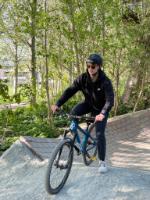 As a Glavin Global Fellowship Grantee, I visited one of the happiest places on earth: Billund, Denmark, home of LEGO. During my five-day research journey, I worked to deconstruct LEGO’s “bygge hygge,” that is, the culture of “creating coziness” – the secret sauce of establishing happiness. I had the chance to tour the world headquarters of LEGO Group, meet with several LEGO associates, and build some of my own LEGO creations. I also traveled to Copenhagen where I interacted with dozens of locals who provided insights on what makes the country so unique. The most common reason: the country’s social welfare system which includes free education and health care, livable monthly support income during periods of unemployment, etc. Additionally, I visited museums, toured the Happiness Research Institute, and I rode a bicycle around the city. One unexpected surprise was an invitation to join a group of Danish school children as they tried their hand at dirt bike jumping. I feel privileged to have brought a little bit of Babson to Denmark and have been changed myself as a result of the journey. - Ian Hammer (Grant in 2022)
As a Glavin Global Fellowship Grantee, I visited one of the happiest places on earth: Billund, Denmark, home of LEGO. During my five-day research journey, I worked to deconstruct LEGO’s “bygge hygge,” that is, the culture of “creating coziness” – the secret sauce of establishing happiness. I had the chance to tour the world headquarters of LEGO Group, meet with several LEGO associates, and build some of my own LEGO creations. I also traveled to Copenhagen where I interacted with dozens of locals who provided insights on what makes the country so unique. The most common reason: the country’s social welfare system which includes free education and health care, livable monthly support income during periods of unemployment, etc. Additionally, I visited museums, toured the Happiness Research Institute, and I rode a bicycle around the city. One unexpected surprise was an invitation to join a group of Danish school children as they tried their hand at dirt bike jumping. I feel privileged to have brought a little bit of Babson to Denmark and have been changed myself as a result of the journey. - Ian Hammer (Grant in 2022)
Mithila Art: An Entrepreneurial Tool for Social Change
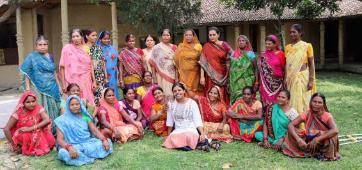 I traveled to Janakpur, Nepal where I visited the Janakpur Women Development Center (JWDC). JWDC is a women's run NGO in the southeastern part of Nepal. The NGO has been constantly working to preserve the local ancient art called, "Mithila Art" and create financial opportunities for the artists. The art is believed to have been practiced in the region since 7th century BCE and has been passed through female members of the family for generations. Even though I belong to the same community, I never got the opportunity to spend time in the Mithila region and learn about the Mithila art. The grant allowed me to do so. I learned how these artists have been using the art form to practice entrepreneurship and empower women without any formal education. - Bidhi Mandal (Grant in 2022)
I traveled to Janakpur, Nepal where I visited the Janakpur Women Development Center (JWDC). JWDC is a women's run NGO in the southeastern part of Nepal. The NGO has been constantly working to preserve the local ancient art called, "Mithila Art" and create financial opportunities for the artists. The art is believed to have been practiced in the region since 7th century BCE and has been passed through female members of the family for generations. Even though I belong to the same community, I never got the opportunity to spend time in the Mithila region and learn about the Mithila art. The grant allowed me to do so. I learned how these artists have been using the art form to practice entrepreneurship and empower women without any formal education. - Bidhi Mandal (Grant in 2022)
Double Defection: North Korean Refugees in South Korean Society
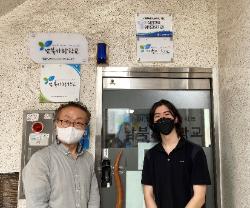
After speaking with several North Korean refugees who have made their homes in the United States, I realized that many have chosen not to live in South Korea, even when given the opportunity to do so. This inspired me to investigate how South Korea’s societal fabric excludes North Korean refugees emotionally, economically, and politically. My explorations included a visit to the Demilitarized Zone, the Korean War Memorial, and an interview with the principal of the South-North Love School. The South-North Love School is for the children of North Korean refugees and a branch of an organization created with the Ministry for Unification to aid defector immigration from China to South Korea. Through these experiences, I discovered the great nuances in the needs of North Korean refugee populations including those who have been trafficked, forced into marriages abroad, and are discriminated against because of their Chinese citizenship and lineage. As a result, shifting South Korean social acceptance of this refugee population not only requires the cultivation of empathy towards North Koreans, but a recognition of the intersectionality of their struggles with other marginalized and abused populations. - Aran Glynn (Grant in 2022)
Navajo Nation: America's Largest Tribe
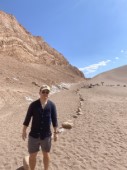 I traveled to the Arizona Desert and visited the Navajo Nation, which is America's Largest Tribe. I am fascinated about how the largest tribe on American soil has withstood the trial of time, and their perseverance throughout the marginalization by the US government. Most of you may know about a piece of the Navajo Nation from the famous movie Forrest Gump, where Forrest stopped running and decided to go home. However, there is a deep history of the Navajo Tribe and their significant contribution to the US victory in WWII. I learned about their unique weaving methods of producing gorgeous rugs and blankets, a staple to the local economy. - Enyu Rao (Grant in 2022)
I traveled to the Arizona Desert and visited the Navajo Nation, which is America's Largest Tribe. I am fascinated about how the largest tribe on American soil has withstood the trial of time, and their perseverance throughout the marginalization by the US government. Most of you may know about a piece of the Navajo Nation from the famous movie Forrest Gump, where Forrest stopped running and decided to go home. However, there is a deep history of the Navajo Tribe and their significant contribution to the US victory in WWII. I learned about their unique weaving methods of producing gorgeous rugs and blankets, a staple to the local economy. - Enyu Rao (Grant in 2022)
What it Takes to be American
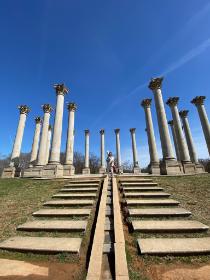 My project was inspired by my dear friend from Afghanistan whom is seeking asylum for her families. I used the grant to travel to Washington DC in parallel to my research and tour many cultural sites that brought a different view of America than I previously known. One of the sites that stood to me is a new exhibition by the Chinese-American Hung Liu in the National Portrait Gallery, where I encountered art as a medium of expression for the forgotten immigrants. During this project, I was very grateful to the people I interviewed and shared my friend’s story with. I want to use this project to emphasize and promote awareness of social issues and provide real-life examples of how students like me and you can help on a much bigger scale. - Kaitlyn Lee (Grant in 2022)
My project was inspired by my dear friend from Afghanistan whom is seeking asylum for her families. I used the grant to travel to Washington DC in parallel to my research and tour many cultural sites that brought a different view of America than I previously known. One of the sites that stood to me is a new exhibition by the Chinese-American Hung Liu in the National Portrait Gallery, where I encountered art as a medium of expression for the forgotten immigrants. During this project, I was very grateful to the people I interviewed and shared my friend’s story with. I want to use this project to emphasize and promote awareness of social issues and provide real-life examples of how students like me and you can help on a much bigger scale. - Kaitlyn Lee (Grant in 2022)
Sustainability and Fashion in Stockholm
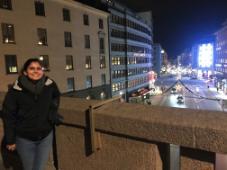 I visited Stockholm, Sweden through the Glavin Global Fellows Program where I learned more about how the Swedish culture plays into the realm of both sustainability and fashion. I had the opportunity to visit many different sustainable fashion stores and companies such as Swedish Hasbeens, Nudie Jeans, and Re:newcell which is a textile recycling company. Through conversations with the individuals I met, I was surprised to learn about how Sweden has perpetuated this consumeristic culture through fast fashion companies such as H&M. However, the reasoning behind this is not only because of rapidly changing trends, but also because of the egalitarian values in Swedish culture that everyone should have access to nice things. - Tara Majedi (Grant in 2019)
I visited Stockholm, Sweden through the Glavin Global Fellows Program where I learned more about how the Swedish culture plays into the realm of both sustainability and fashion. I had the opportunity to visit many different sustainable fashion stores and companies such as Swedish Hasbeens, Nudie Jeans, and Re:newcell which is a textile recycling company. Through conversations with the individuals I met, I was surprised to learn about how Sweden has perpetuated this consumeristic culture through fast fashion companies such as H&M. However, the reasoning behind this is not only because of rapidly changing trends, but also because of the egalitarian values in Swedish culture that everyone should have access to nice things. - Tara Majedi (Grant in 2019)
The Pursuit of Happiness
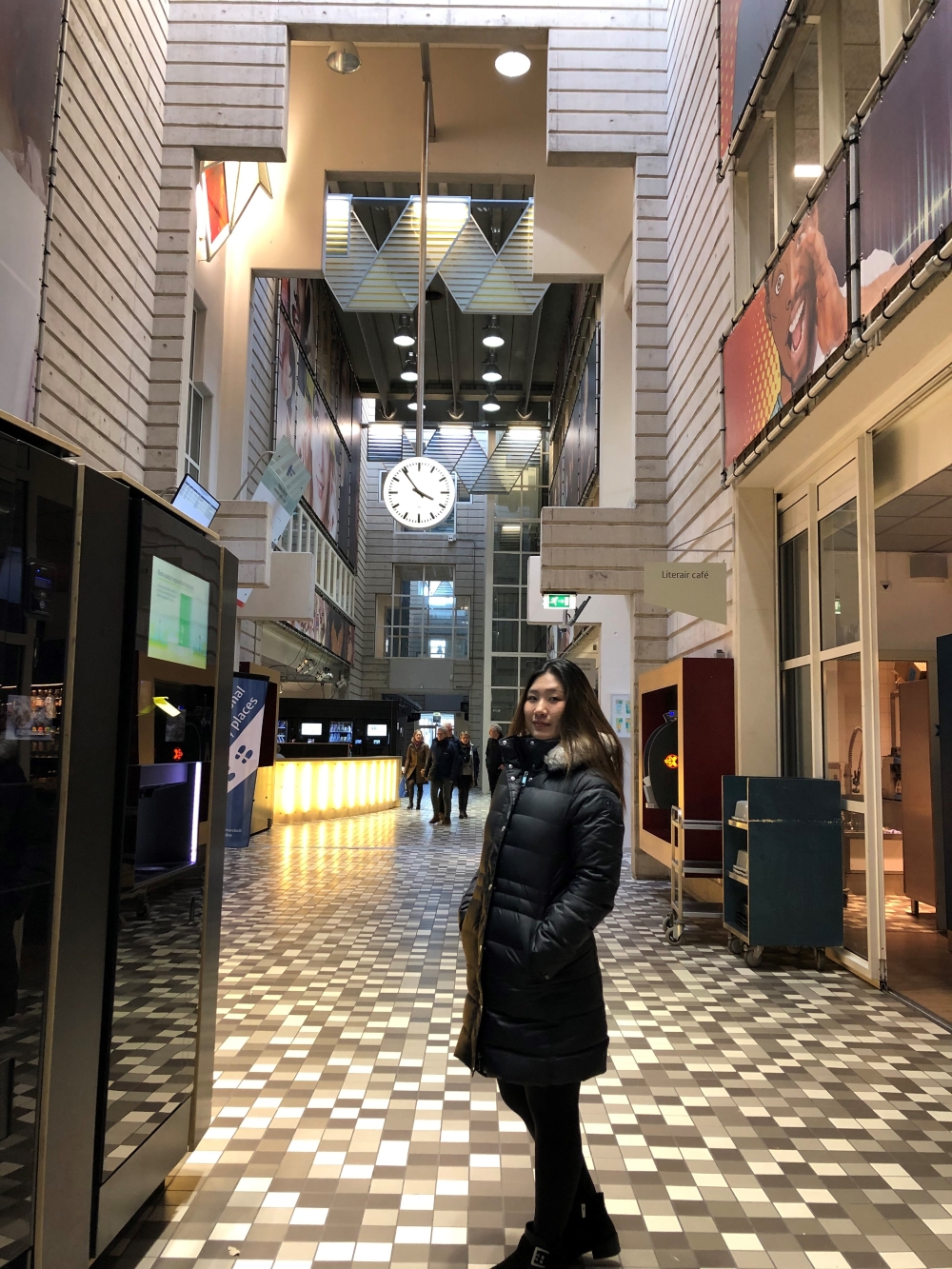
The reason that I traveled to the Netherlands was to learn more about the Dutch educational system and the happiness of their students. While the Netherlands consistently rank among the countries with the most happy youngsters, their educational system is also known for its high quality and affordability. During my trip, I visited one secondary school (the Dutch combine middle and high school in one institution) as well as three out of the thirteen research universities in the country. In this week, I tried to live as a true Dutch student by visiting various classes, attending open days, events of university clubs, campus tours and even a graduation ceremony. By attending all these various events, I was able to meet and interview many local students. Many of them were very excited to share their stories, which allowed me to obtain an excellent understanding of the major differences between the American system and the Dutch one. Additionally, my Dutch friend took me to a number of iconic places in the Netherlands that played an important role in the country’s culture. In this way, I was able to visit the historical sites in the downtowns of Leiden, Maastricht, and Amsterdam, which allowed me to understand the cultural nuances of the various regions in the country. Going on this trip has changed my perspective on the way in which educational systems could be organized differently. Being able to experience the manner in which Dutch students live on a first-hand basis really broadened my horizon. It was inspiring to see how the design of the Dutch educational system empowered students to truly pursue their happiness and discover their passions. - Kimberly Park (Grant in 2018)
Cuba: A Walk into the Past
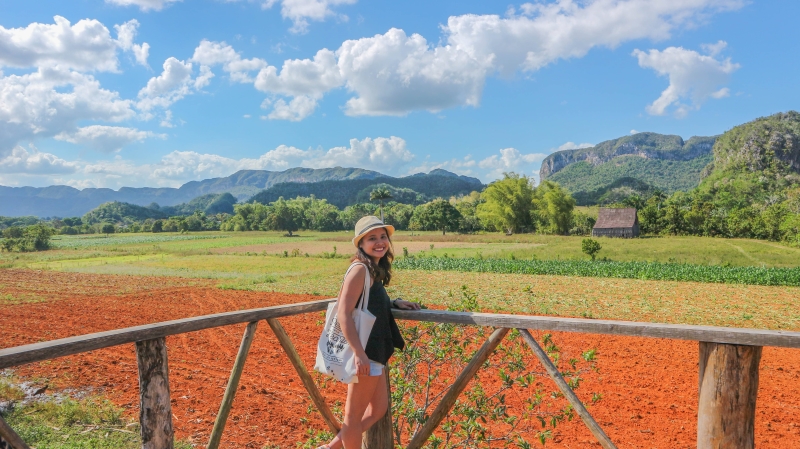
Growing up in Vietnam, I learned about iconic friendship of the era between two countries Vietnam – Cuba. The relationship between two countries has been built upon the commonality of communist principles and political beliefs of their leaders, Ho Chi Minh and Fidel Castro, in communism. Going to a high school in Israel and now a college in the US, I got to know about the opposite narrative towards the country. Hence, Cuba has always been an interesting place for me.
Over the spring break, I had the chance to go to Cuba to explore life in one of the last strictly communist countries in the world as a walk into the past to learn about my own country, Vietnam during the 90s. My trip to Cuba unveiled many myths that I have heard from both sides of the political spectrum, allowed me to observe things with my own eyes and see the country beyond the convoluted nature of politics.
On one hand, Cuba really reminds me of home, Vietnam in some senses – the old buildings, the messy streets, the vendors. On the other hand, it is so exotic, so different and nothing like any other countries I have been to before. Throughout my trip, I got the opportunity to experience a little bit of everything in the Cuban lifestyle and understand the country better. It was so fascinating that I barely noticed that I had only 2 hours of WiFi for my entire week spent in Cuba! You can see more photos and information from my trip to Cuba at: https://www.linhha.net/cuba
(Note: WiFi is only available in some public centers in the country and people need to buy cards to access to the Internet at the price of $1/ hour). - Khanh-Linh Ha (Grant in 2019)
Hong Kong: Living by the Minimum
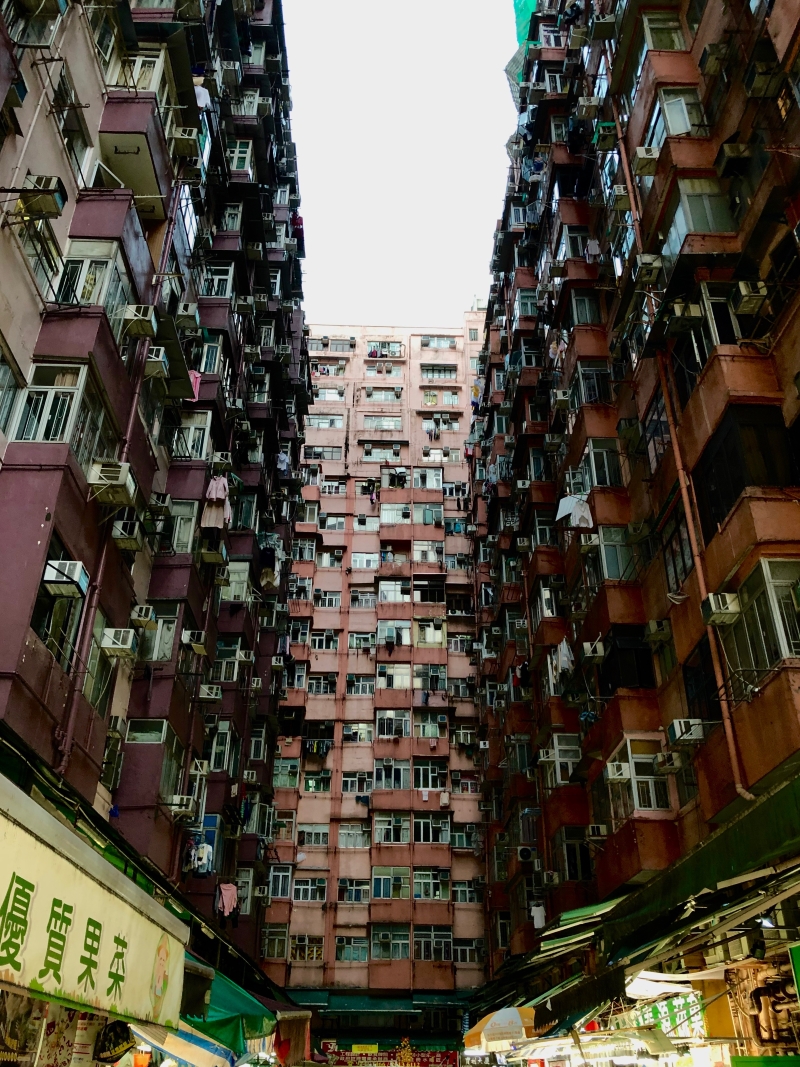
In a city as cosmopolitan and glamorous as Hong Kong, I had the opportunity to immerse myself in one of the greatest experiential learning opportunities in my life. I got a chance to comprehend how a city of 7.4 million people occupy a mere 7% of Hong Kong’s 1,111 square kilometer’s total land space. I learned about it’s expensive housing endemic and how it has forced a population to cope with a city built within tight quarters and to the limits of the sky. My fellowship project focused on the residential conditions faced by people living in poverty. In a city where per square meter real estate is double the price of Manhattan, subdivided units are subjected to the only alternative to affordable real estate options. This forces single household occupancy spaces to be shared by multiple families and create conditions known as coffin homes. To put this perspective, the average space in a sub divided unit is 62 square feet. These claustrophobic spaces influenced many to take advantage of the cities well-kept and open parks. This is particularly where I had the opportunity to interact with locals from different districts – Kowloon, Sham Shui Po, Yau Tsim Mong, Kwun Tong, Wong Tai Sin, and Eastern Hong Kong Island. All of whom had a unique perspective about the cities architectural infrastructure and rising inequality in the country. These perspectives allowed me to further my understanding of a side of Hong Kong beyond its charm. - Austin Yang (Grant in 2018-2019)
The Growing Muslim Community in Rio, Brazil
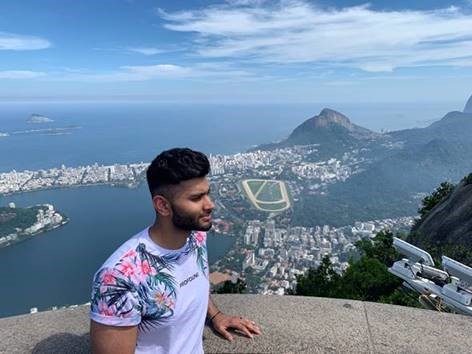
I had the great pleasure of being selected to conduct research on the growing Muslim community in Rio, Brazil. Latins are the fastest growing ethnicity of Muslims across the world, and South American countries are witnessing an expansive increase of Muslim converts within the region. I wanted to explore why Islam is spreading across South America and Brazil was a great touch point as the country houses the largest Muslim population within South America. During my time in Rio, I was able to visit the city's only mosque. There I met with the Imam (religious leader), secretary, and the President. I conducted primary interviews to further understand what's behind the growth of Islam in Rio. I astonishingly found 80% of the Muslim community in Rio is Brazilian. Another learning came when I asked the Imam why were people converting? To my surprise, a lot of Brazilians were coming to the mosque to learn about Islam because of the negative things portrayed by the media. I guess it's having more of a positive effect than we thought. I even got to see a woman convert to Islam in the mosque following the Friday congregational prayer! – Mahd Sharif (Grant in 2018-2019)
How to Celebrate Thanksgiving Without Clean Water
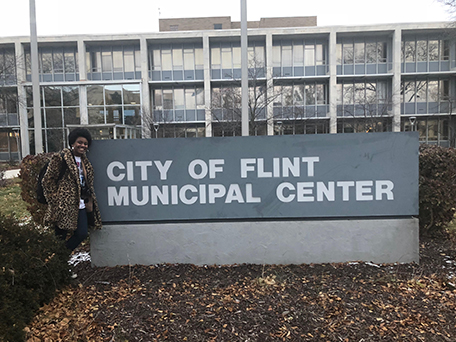
Flint, Michigan has gone without clean water for over four years. During that time, I have followed the story of Flint from afar, but the resilience and advocacy of its residents has continued to resonate with me. The key purpose of this docuseries, “How to Celebrate Thanksgiving Without Clean Water,” is to look at how and why an American city with a primarily poor Black population (57%) was thrust into this environmental and human rights disaster; I used race and wealth as key aspects of my analysis to show how these two identities potentially impacted the urgency of how the country’s federal and state governments reacted to the Flint Water Crisis. I visited Flint to highlight these racial and economic discrepancies so that I could help draw a clear image of what a lack of privilege and wealth looks like in contemporary America. Other than the great conversation this film will ignite about wealth inequity in the United States, my time in Flint reminded me of my passion for social entrepreneurship and storytelling. As I spoke more with Flint’s residents, it became clear that if we, as marginalized people, never tell our stories, our histories will be morphed and recreated until we no longer recognize them; these struggles are weaved into a globalized fabric and it’s imperative that we continue to sew those narratives into the seams. As a storyteller and activist, it is my responsibility to cherish and appreciate the truths of the people I continue to encounter. My mission should never be to sell a narrative; instead, my goal, with every project that I work on, is to break down the complex and systemic societal structures into pieces that are digestible; to supplement real experiences and narratives with fact. And if I cannot do that without compromising the story, then I probably shouldn’t be telling it. – Melissa Denizard (Grant in 2018)
Thailand: The Beauty, the Women, and the Sex Industry
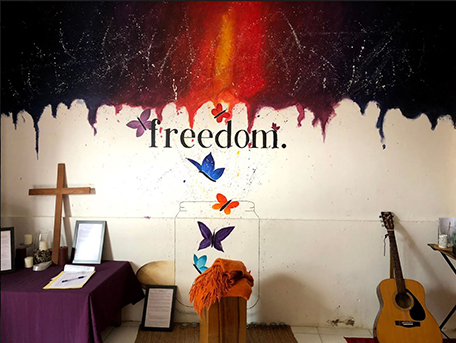
I traveled to Thailand was to learn more about trafficking and lack of women development in the country. Thailand is known as one of the highest sex tourism spots in the world. Not only are there many articles on the subject, but many statistics on how often the “sex workers” are actually trafficked from other cities and even other countries. In Bangkok, I was able to go to major red light districts such as Nana Plaza and Khao San Road. I documented many sex workers in the area and heard about their struggles. Although I won't be able to disclose any stories to maintain their privacy, I can say with utmost candor that Thailand was the most life changing experience of my life because of these very stories. I also researched other nonprofit organizations committed to helping sex workers who are abused or trafficked. The one organization that really blew my mind was NightLight International. Not only do they have a support system and several after care programs for men and women (sex workers) who need help, but they also have a memorial dedicated to women and children who were captives of the sex industry. I spoke to one of the VPs of the program, who makes sure that everything in NightLight runs smoothly for the sex workers that need aftercare. They are doing amazing work and deserve recognition globally. All in all, it was an incredible experience and I will use everything I've learned to maximum to venture into my own nonprofit/social venture. – Aria Mustary (Grant in 2018)
Romania: The Underdog of Europe
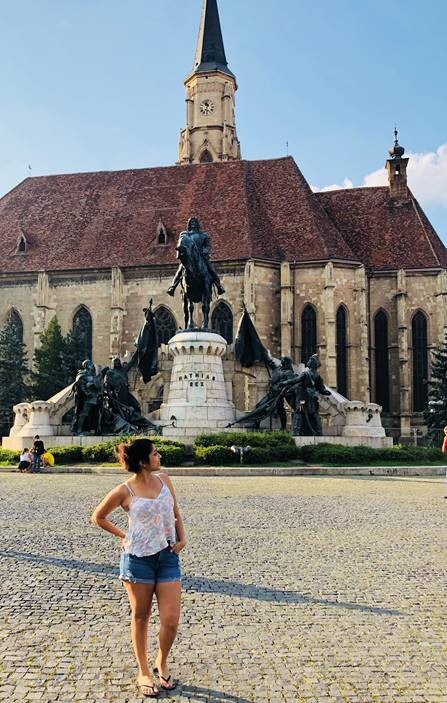
For 8 days, I immersed myself in the Romanian environment and had the most unbelievable experience of my life. I learned about its unique history and the political strife that the nation faces. Having recently overturned a Communist government, Romania is still recovering from the remnants of that era. Moreover, the power vacuum created more political problems and with that, a rising youth activism movement. The locals struggle with drawing the line between empathy and apathy with regards to this uprising. Yet, the sense of collectiveness and co-operation amongst the people is one that I truly admired. Even more so, I got to interact with locals from different backgrounds—Russian, Indian (gypsy), German, Moldovan and Turkish descent. All of whom had a unique perspective to share about their experiences in Romania and their family's history. With the people came their culture in terms of architecture and art which was mesmerizing to expose myself to. Overall, I got a better understanding of the reasons behind the rising emigration trend and income inequality in the nation. With all that in mind, this trip gave me a snapshot of the potential that Romania has to offer having interacted with locals and being immersed the environment. – Ashmita Padia (Grant in 2017-2018)
Culinary Influence of Portugal

In May I traveled to Portugal to answer the question: How did the world's cuisine adapt with colonialism? It might prove a task to remember small Portugal as once the leading colonial empire, yet it was Portuguese explorers who initiated maritime trade in the 16th century with Asia, Africa, and the Americas, and paved the roads for the most important spice trade in history—introducing ingredients such as cinnamon, cardamom, pepper, paprika, along with tea, rice, peanuts, tomatoes, and potatoes to Europe. I concentrated my time in Lisboa and Porto, learning the tale of two port cities that were Iberia's main vestibules for exports to Northern Europe. In these two cities I found that the Portuguese hugs its cuisine and traditions tight to its chest, yet the hints of fusion from the past is evident in every recipe. The favored condiment piri piri chili, for an example, is originated from a pepper cultivated and brought over from Portuguese Mozambique. In the same study, I related a lot of original Portuguese recipes to foods that are found around the world; a prime example is the pastel de nata, an egg tart dessert created from left over egg yolk by nuns in 18th century Lisbon, and is now widely enjoyed in all parts of Asia. An interesting aspect to food is what it can say about history. I had wondered if Portugal being the colonizer affected how food transformed. I found that although the dynamic of power put Portugal at an advantage to claim ownership to a lot of ingredients, it was actually the rest of the world that received more vibrancy and adaptations to recipes due to the spice trade. I want to apply this question to the conversation: How do food fusions originate and what does it say about the history of the place? – Laurie Yuan (Grant in 2017-2018)
Exploration of Street Art in Rome Through a Contemporary Scope
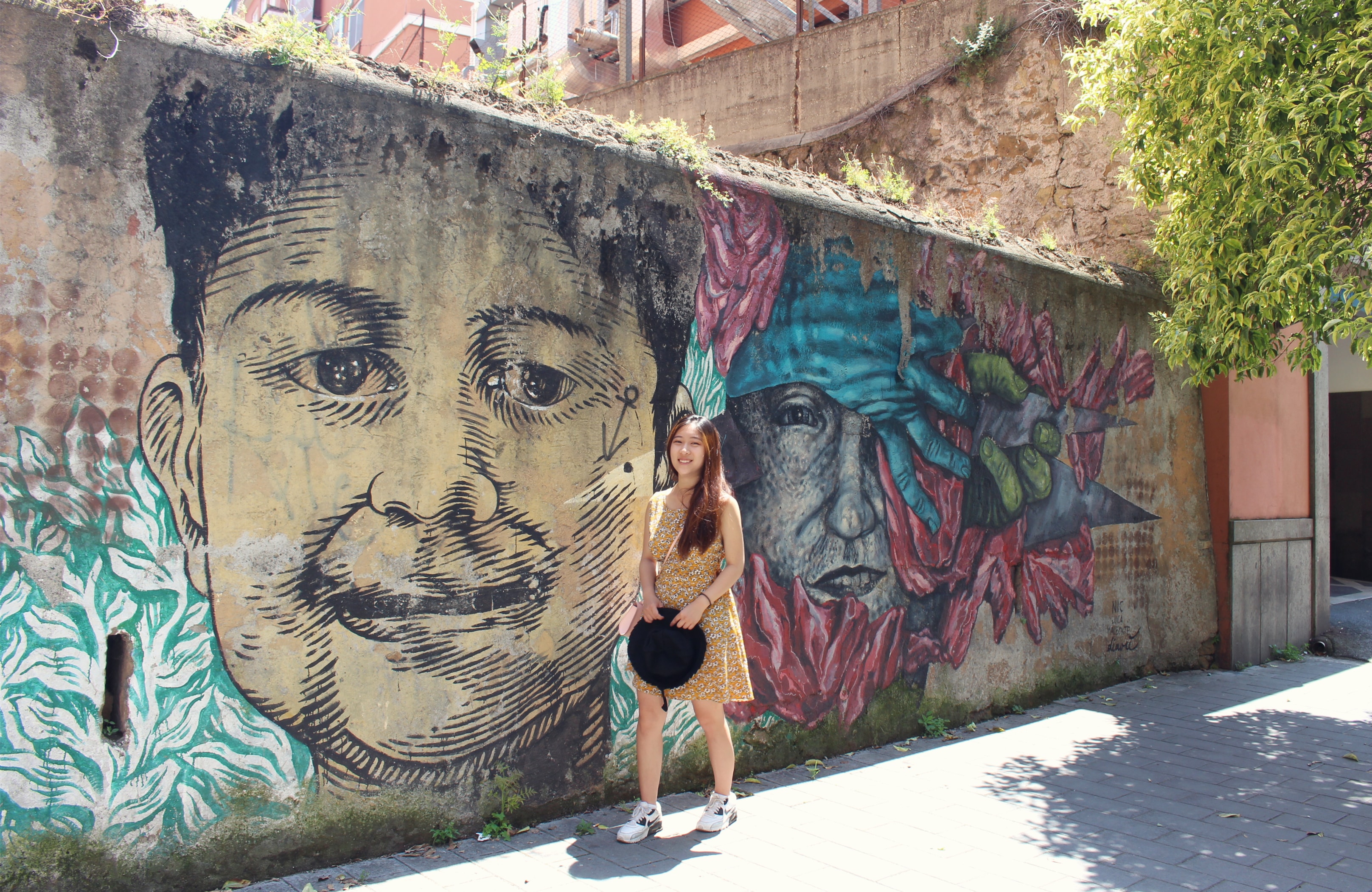
I visited Rome to explore the influence of street art on city planning and tourism. Rome, famous for its collection of classical architecture and statue, has recently become a popular hub for renowned international artists as well as aspiring local artists. I began my project in San Lorenzo, a working-class neighborhood that was bombed heavily during World War II. I paid close attention to how street art interacts with surrounding areas and what does it reflect about a community. Boutiques and shops are slowly replacing old markets; meanwhile, creative art piece has taken over old graffiti that once occupied the space. During my trip in Pigneto and Torpignattara, I understood how government initiatives contribute to this street art revolution in Rome. “Light Up Torpigna Project” is a great example in which artists incorporate both historical and modern aspects of the neighborhood into their creative process. Along the way, I interviewed local residents and store owners to hear their opinions on street art and what changes are brought to the community. The existence of street art in residential space has truly sparked an unexpected social and cultural renewal. Tourists are also encouraged to start discoveries in these unconventional spaces. – Xianle Jin (Grant in 2018)
The Movement of People: Modes of Transportation in Morocco
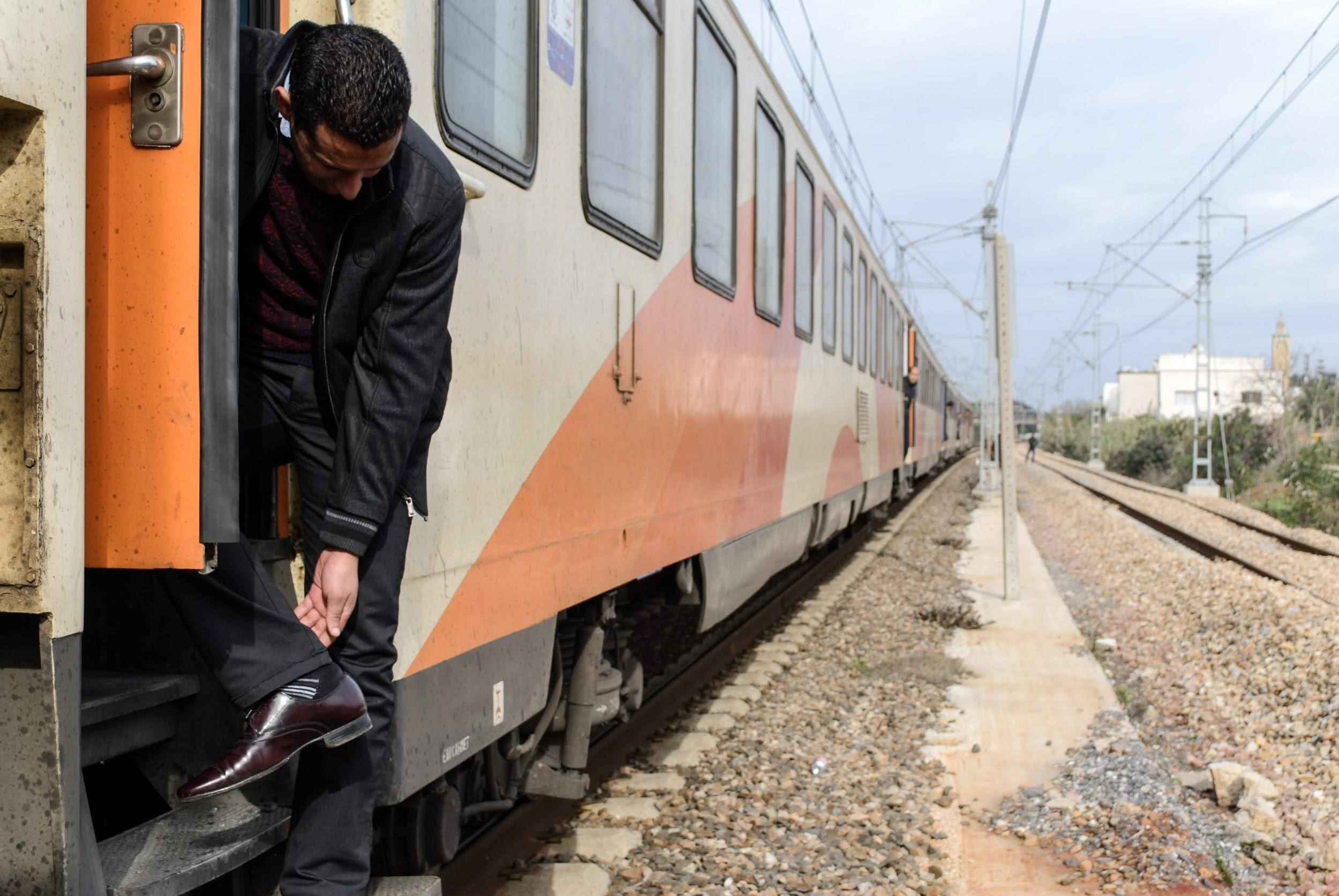
I traveled to Morocco with the intent to investigate the inner-city and inter-city transportation system, as well as look into its greater socio-economic significance. I began my journey in Tangier, the northernmost tip of the nation. From there, I circumvented the country by bus, grand-taxi, train, Uber, tramway, ATV, scooter, and ferry, stopping along the way in Chefchaouen, Fes, Casablanca, Marrakech, Essaouira, and Rabat. How are certain modes of transport seen/treated? How often is a particular mode of transport used? For what purpose is it used? Leisure? Travel? Work? How much does it cost? What are the cheapest forms of transport? The more expensive ones? Armed with questions such as these, I made my way around Morocco, all the while documenting my trip with photographs. Pictured here is the Rabat-Marrakech line. The train had been stopped for almost an hour at this point due to construction on the rails, and passengers were becoming irritable, Many of them got off the train in a demonstration of complaint. I got off with them and took this picture. – Oussama Ouadani (Grant in 2017)
Ecotourism Research and Development in the República Dominicana!
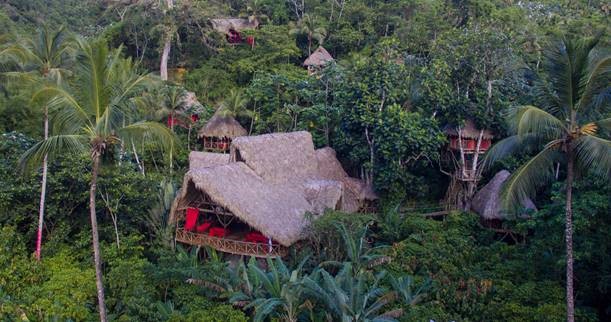
Situated in the Samaná Peninsula, the Dominican Tree House Village is located in a hidden paradise—the region warmly regarded as the “best-kept-secret” of Dominican Republic. Since its construction in 2014, the Tree House has been dedicated to using local materials and labor, directly providing jobs to over 100 people and helping raise the standard of living throughout the El Valle region.
The sustainable development of the DTHV provides a powerful contrast against the exploitative resort monopolies of Punta Cana, where seaside resorts uproot entire local communities. With tourism as a fundamental contributor to the Dominican economy and annually valued at 3.4 billion USD, my research focused on various strategies used within the hospitality industry to increase revenue. Ecotourism not only provides a venue for ethically generated income, but creates an influx of opportunities for individuals in the local community—elevating the standard of living and increasing job opportunities. While it was a privilege to conduct this research project in person, it was interesting to note that greenwashing was not lacking in such sustainability initiatives. I’m tremendously grateful for this opportunity, and I look forward to returning in the summer to continue my research and further collaboration with the eco-hotels in the region. – Angela Lin (Grant in 2017)
The Isolated State: Media in Doha, Qatar
I explored press freedom in Doha, Qatar, a city that is home to Al Jazeera Media Network. Since Qatar like many other Middle Eastern countries is a cross between an absolute and constitutional monarchy, I wondered why the country allowed an international media network to operate in and be funded by the government. I spoke to Professors from multiple universities such as the Northwestern University of Qatar, Qatar University and the Doha Institute for Graduate Studies to understand the marriage between state and press freedom. I got to visit Al Jazeera Media Network and the Gulf Times, the largest English speaking newspaper in Qatar and heard firsthand how the government does or does not affect reporting. Beyond learning about media freedoms in Qatar, I started understanding how a monarchy functions with a 12% local population and large natural gas reserves. I also started understanding further the tensions between Qatar, Saudi Arabia and other countries that are members of the Gulf Cooperation Council (GCC). 88% of the population migrated from different parts of the world so I felt I was in a truly international environment. – Salome Mosehle (Grant in 2017)
Volunteering with Refugees in Greece
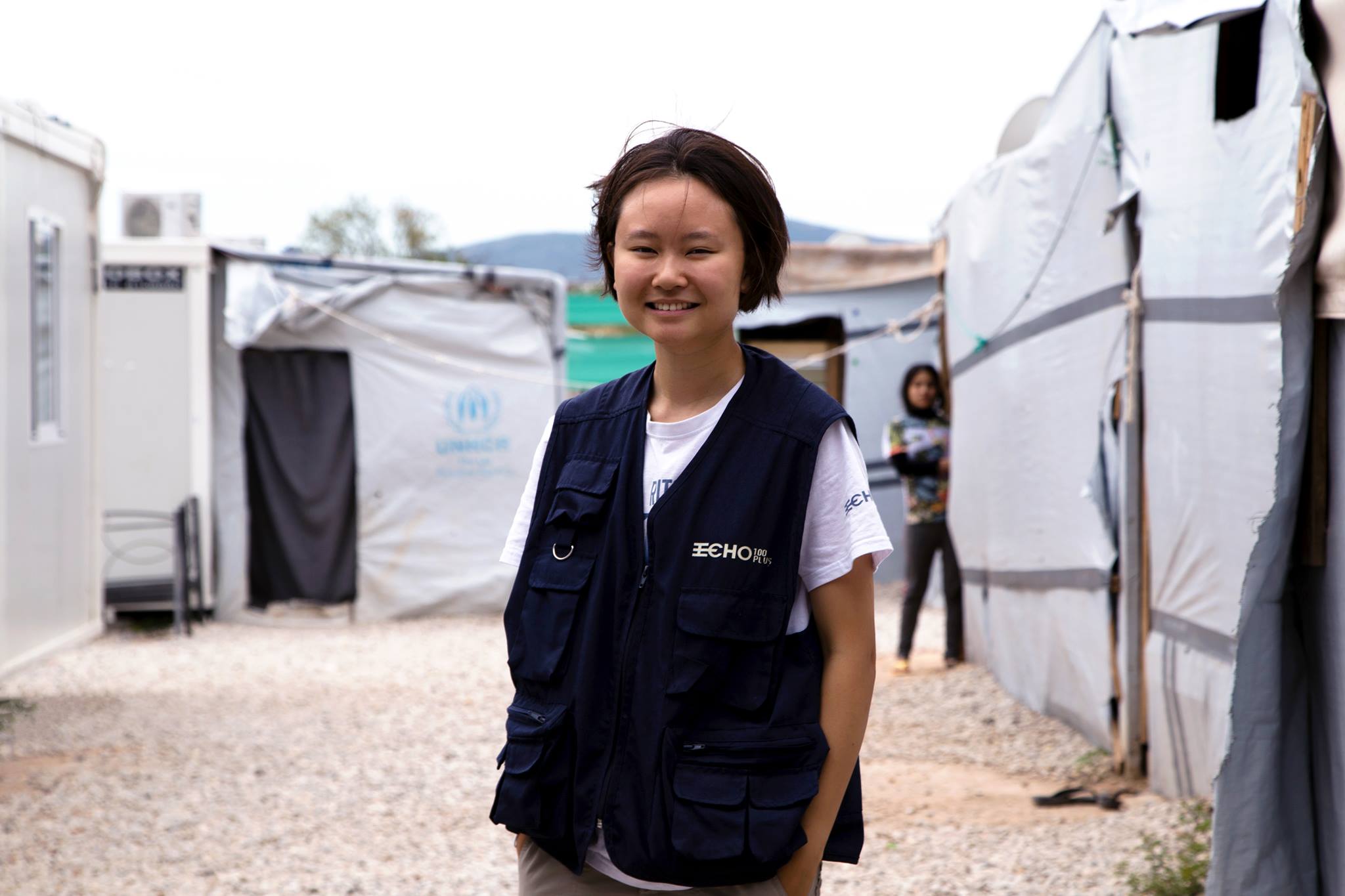
In the summer of 2017, I volunteered with an Austrian charity aiding refugees from the Middle East, Central Asia, and East Africa in Greece. During my first four weeks, I assisted a team operating an education and community center for adult refugees on the Greek island of Leros near Turkey. For the next three weeks, I joined a mainland team providing basic needs distribution to a Syrian refugee camp located an hour’s drive north of Athens. Beyond the hands-on effort required for both operations, I publicized the charity’s aid work on Facebook, YouTube, and Instagram as a form of public relations and donor outreach. Through photographing and interviewing refugees and volunteers, I learned how the European refugee and migrant crisis evolved from a being a humanitarian emergency on the shores of Greece to a longer-term situation in which economic integration in Europe became key. – Xizi Luo (Grant in 2017)
Arabic Cultural Immersion in Morocco

I traveled to Morocco for a week for a cultural immersion experience, while simultaneously learning about entrepreneurship in the region. I travelled to the city of Marrakech to gain exposure to the darija language. This old city taught me about the famous red clay architecture and allowed me to see the more humble roots of the country while staying with a host family. I explored the Atlas Mountains and of course, traveled by camel! I then made my way to Casablanca to learn about entrepreneurship challenges this major city faces. I attended a conference with Toulouse Business School and was able to share my experience studying entrepreneurship at Babson, to provide input on how our community stays innovative. – Gyda Sumadi (Grant in 2016)
STARTUP ISLAND: Cultivating an entrepreneurial lifestyle
.jpg)
Startup Island is a one-week immersion experience held in Costa Rica. It connects entrepreneurial students with established entrepreneurs for a week of coaching and guidance to accelerate their entrepreneurial progress. The coach to student ratio is almost 1:1 which personalizes the experience to suit individual needs and create a tight-knit community of friends and mentors.
Personally, I benefitted most from the one-on-one conversations with the various coaches who shared their experience and advice on a multitude of topics. For every question I had on entrepreneurship, I got multiple answers from different viewpoints and had the pleasure to walk through the journey that some of these entrepreneurs had undergone. There was plenty of resources, advice and motivation to jumpstart your personal and professional journey. In the words of Lee Jampolsky, “Ask yourself what is really important, and then have the courage to build your life around your answer.” – Shalom Kinyua (Grant in 2017)
Don’t Touch My Hair: Exploring Beauty in South Africa
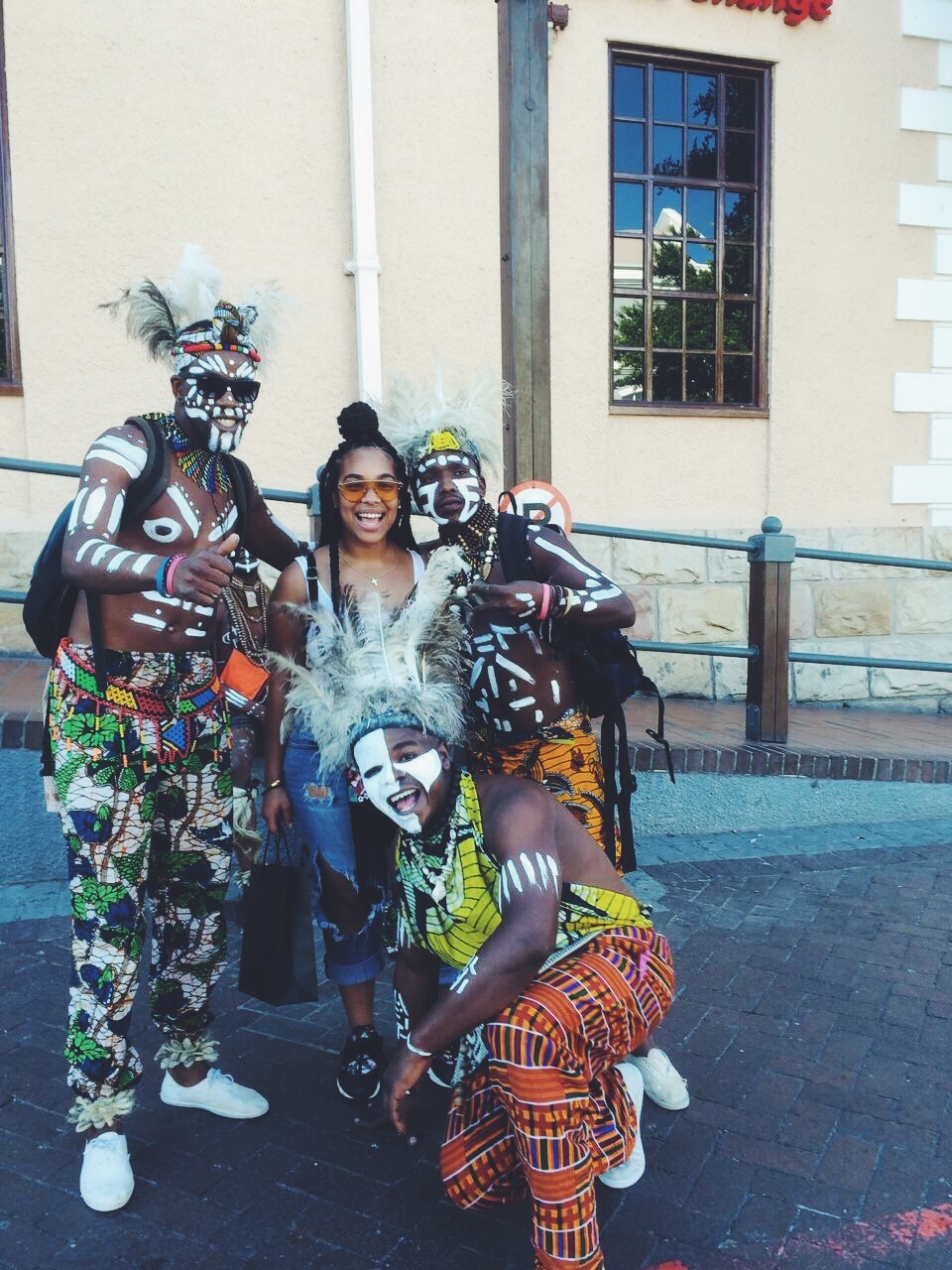
In pursuit of studying beauty and understanding the harmful effects of beauty standards, I traveled to Cape Town, South Africa. I chose Cape Town because, I initially studied beauty standards within America, and was curious if this is a global phenomenon, and it is! There are a lot of parallels that can be drawn between Cape Town and America due to slavery and links between the apartheid and segregation. These defining moments in history have had lasting effects in both locations, with beauty and the business of beauty as side effects to the racism, wealth gap, and other larger problems created by both apartheid and slavery. South Africa is a predominantly black country with diversity abound. Beyond getting a deeper understanding of beauty in South Africa, I also paid attention to the advertisements to see if the marketing campaigns of a variety of companies featured some of the rich diversity that Cape Town has to offer. To obtain details for my research, I visited museums, a Fashion Week show, read books at the University’s library, and spoke to everyone; students, waitresses, Uber drivers, my AirBnb host, my South African family, people in line in front of me, anyone that wanted to share their beauty story. The experience was amazing, and Cape Town has become my new favorite city! – Nadia Mendes (Grant in 2017)
Project 99
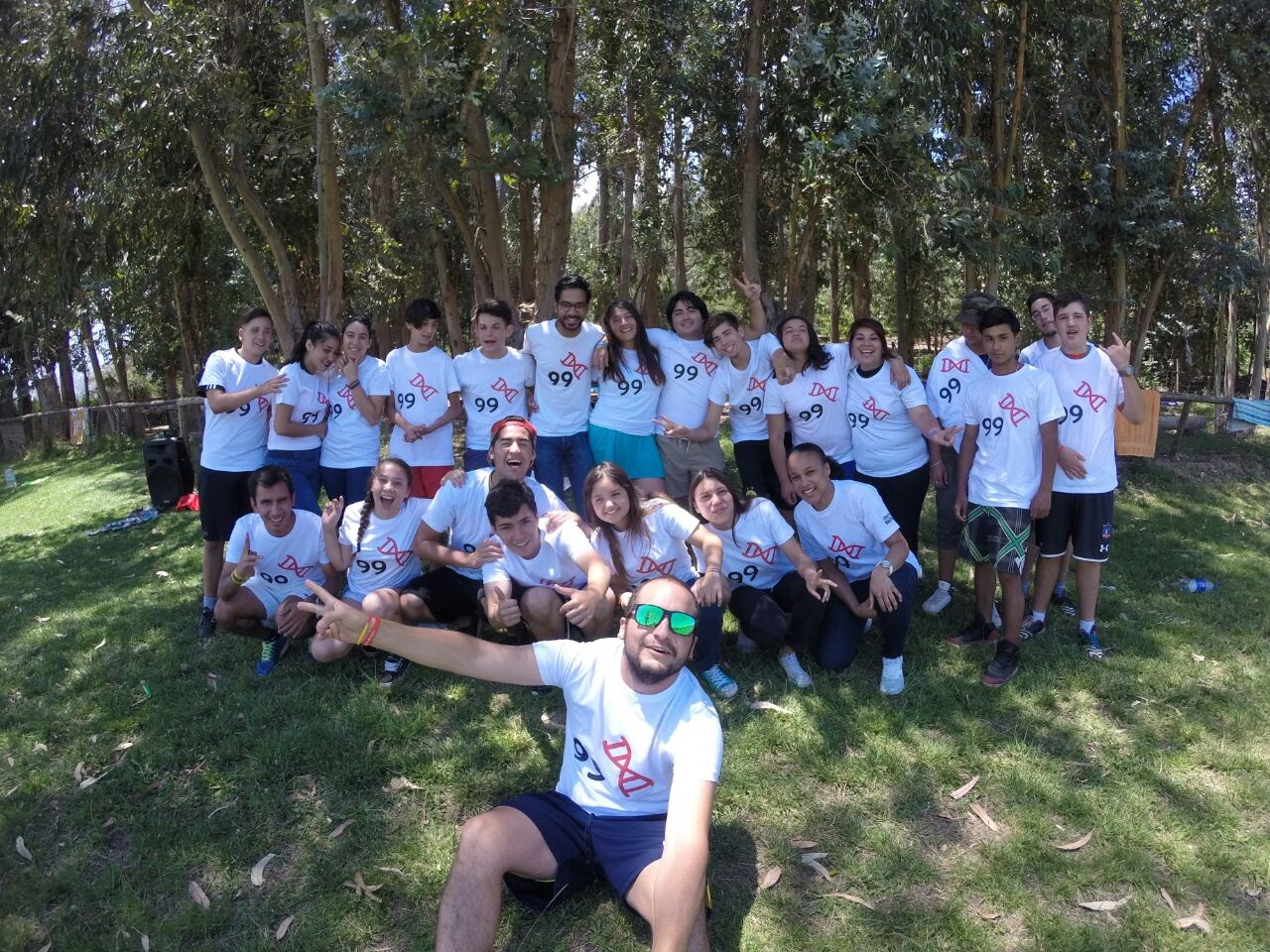
For my Glavin Global Fellow Project, I travelled to Santiago, Chile to execute a Project 99 pilot in partnership the non-profit organization, Futbol Mas. Project 99 is focused on the empowerment of underrepresented students and professionals through our immersive 3 to 5 day experiences. In Chile, we teamed with a non-profit that was enabling leadership through the lens of soccer, and were able to supplement the participants experience through the lens of diversity and inclusion. – Josuel Plasencia (Grant in 2016)
Consumer Behavior Across Cultures
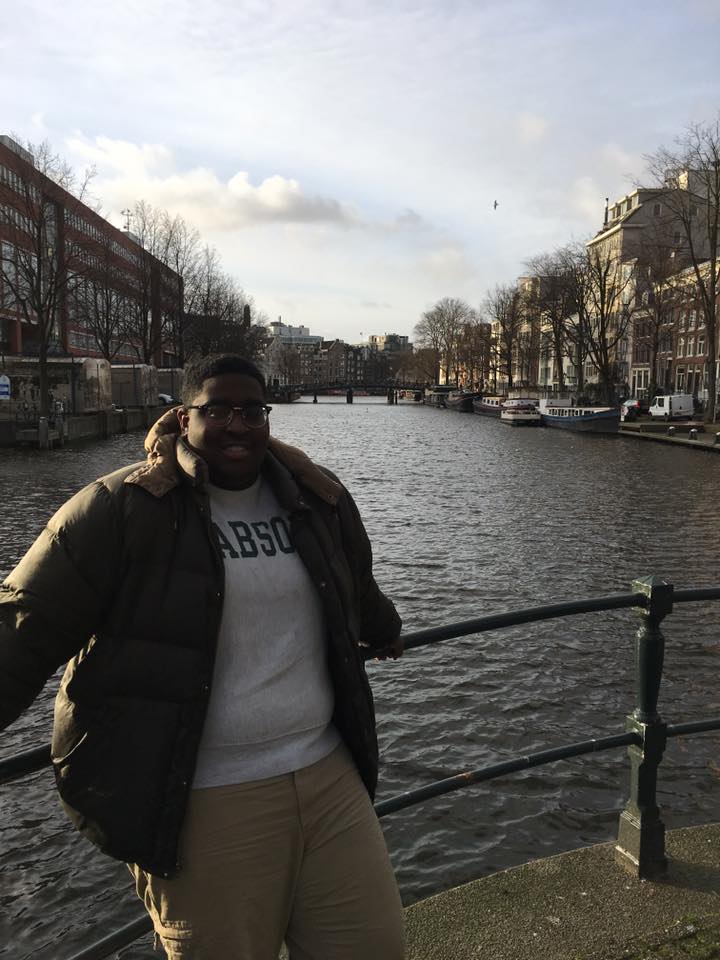
I have entitled my project Consumer Behavior Across Cultures and I decided to use Amsterdam, Netherlands as my lens for the project due to the thriving culture and youth population in the city and it’s emergence in pop culture. I spent a week in the heart of the city exploring each neighborhood and talking and interviewing with different people at cafes and restaurants and even within my own AirBnB stay trying to find out their own scope and view towards marketing and advertising and how consumer behavior differed across cultures. I really wanted to get a deeper look into a field and by just interviewing and meeting with people I was really able to develop myself culturally and professionally. – Aidan Dennis (Grant in 2016)
The Darkness Beyond Cancun’s White Sand & Turquoise Sea
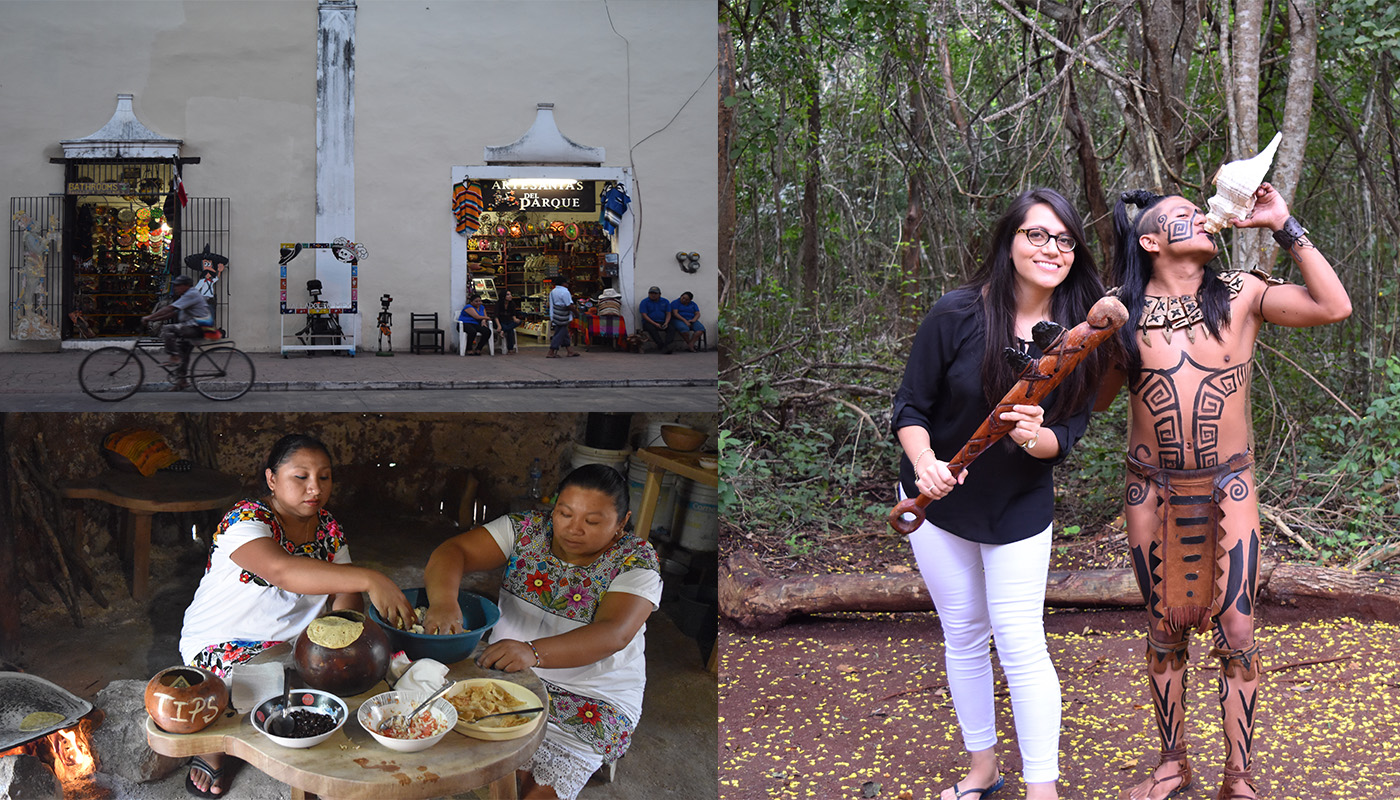
My GGF project was mainly focused on exploring the growing problems (polarization and social asymmetry) in the luxurious tourist destination of Cancun, Mexico. My visit to Mexico allowed me to take a closer look at the daily happenings around the over-hyped Hotel Zone in Cancun and understand how a place, that attracts millions of tourists yearly and generates millions of dollars through this industry, has a darker side that goes beyond glittering hotels and immaculate streets. – Eshwa Azadzoi (Grant in 2015)
Business and Cultural Exploration in Ghana
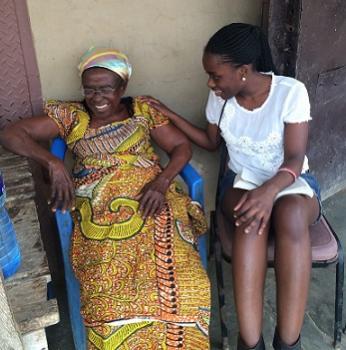 I traveled to Ghana for two weeks for a business and cultural exploration. I was interested in immersing myself in a country beyond the Western narrative that I have been exposed to here in the U.S.. During my trip, I explored the capital city of Accra and its surrounding areas, Kumasi and Cape Coast. My experience in Ghana has enhanced my thinking on global issues, as well as strengthened my own cultural identity. – Josephine Osei (Grant in 2015)
I traveled to Ghana for two weeks for a business and cultural exploration. I was interested in immersing myself in a country beyond the Western narrative that I have been exposed to here in the U.S.. During my trip, I explored the capital city of Accra and its surrounding areas, Kumasi and Cape Coast. My experience in Ghana has enhanced my thinking on global issues, as well as strengthened my own cultural identity. – Josephine Osei (Grant in 2015)
A Cultural Immersion in Peru: Family, Language and Volunteering
My project was focused on a cultural immersion in Peru, where I volunteered in a community in the outskirts of Cusco, took advanced Spanish classes, and lived with a local family for one month—all while contributing to a non-profit organization that provides technical/vocational education to low-income teenagers and young adults who otherwise would not have many prospects in the community. – Cassiano Dos Santos (Grant in 2014-2015)
Diplomats for Diversity (Paris) Visit Babson College
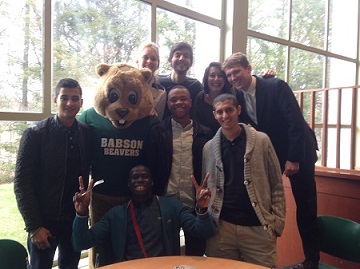
With the GGF grant, I was able to facilitate the visit of the Diplomats of Diversity—four young, underprivileged French students from the Goutte D’or in the center of Paris. During their time at Babson, the Diplomats were able to meet and speak with students, learn about business and entrepreneurship, and teach Babson students, faculty, and staff about what their life is like back at home. – Lexi Kantor (Grant in 2014-2015)
Empowering the Next Generation of Leaders
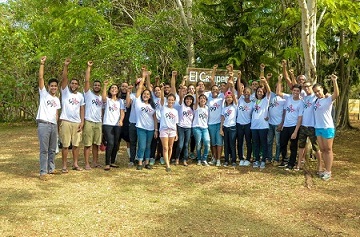
My first program for Project 99 was in the Dominican Republic, where we gathered 30 young leaders from across the island for a 4-day immersion experience in an ecological retreat where they discussed problems that existed in their communities. The mission is to empower the next generation of leaders to be inclusive leaders, ones with a strong sense of diversity—especially as it deals with gender, race, socio-economic status, sexual orientation and occupation. – Yulkendy Valdez (Grant in 2014-2015)
The Entertainment Scene in Shanghai
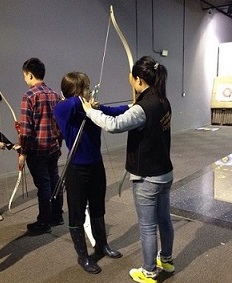
During my semester abroad in Shanghai, I realized that even though I had already traveled to China multiple times, there were still some aspects of the Chinese culture that I was not that familiar with, especially the entertainment scene. Therefore, I decided to go through various experiences that fell in the entertainment world. Each of these opportunities were unique to Shanghai and helped me to understand the unique ways in which residents entertain themselves. – Roxelane Wagner (Grant in 2014-2015)
Business in Peru
Why did I choose Peru as my country of focus? Mainly because I was interested in the way of doing business in one of the world’s fastest growing economies and top Latin American destination for foreign investment. Here, I got to practice my Spanish conversation skills during everyday life and took more lessons focused on learning business terms. I also got to explore Lima, the capital, and some of its most famous tourist attractions, as well as the delicious Peruvian food! What surprised me the most? I would say the friendliness of the people, the country’s richness of history, and the contrast between the rich and the poor. – Claudia Ogrezeanu (Grant in 2014-2015)
